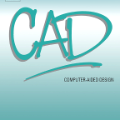Coronary artery disease (CAD), one of the most common cause of mortality in the world. Coronary artery calcium (CAC) scoring using computed tomography (CT) is key for risk assessment to prevent coronary disease. Previous studies on risk assessment and calcification detection in CT scans primarily use approaches based on UNET architecture, frequently implemented on pre-built models. However, these models are limited by the availability of annotated CT scans containing CAC and suffering from imbalanced dataset, decreasing performance of CAC segmentation and scoring. In this study, we extend this approach by incorporating the self-supervised learning (SSL) technique of DINO (self-distillation with no labels) to eliminate limitations of scarce annotated data in CT scans. The DINO model's ability to train without requiring CAC area annotations enhances its robustness in generating distinct features. The DINO model is trained on to focus specifically on calcified areas by using labels, aiming to generate features that effectively capture and highlight key characteristics. The label-guided DINO (DINO-LG) enhances classification by distinguishing CT slices that contain calcification from those that do not, performing 57% better than the standard DINO model in this task. CAC scoring and segmentation tasks are performed by a basic U-NET architecture, fed specifically with CT slices containing calcified areas as identified by the DINO-LG model. This targeted identification performed by DINO-LG model improves CAC segmentation performance by approximately 10% and significant increase in CAC scoring accuracy.
翻译:暂无翻译




